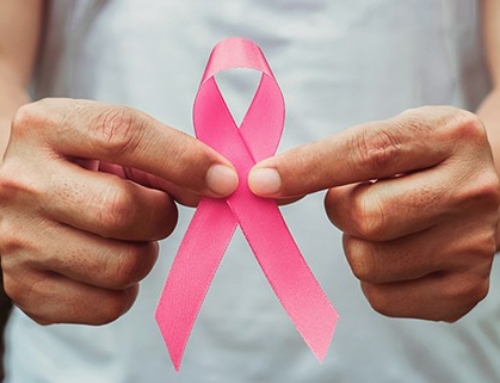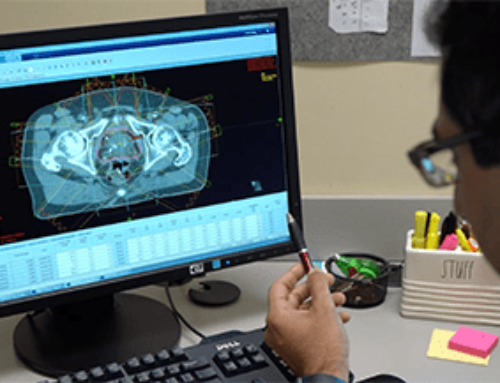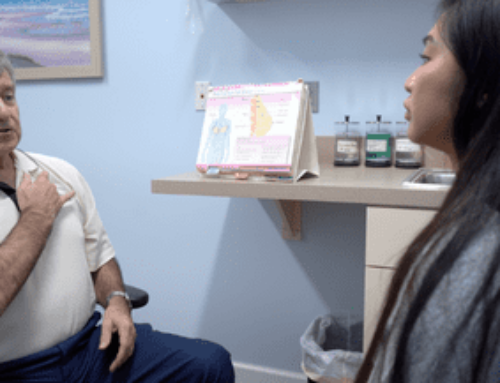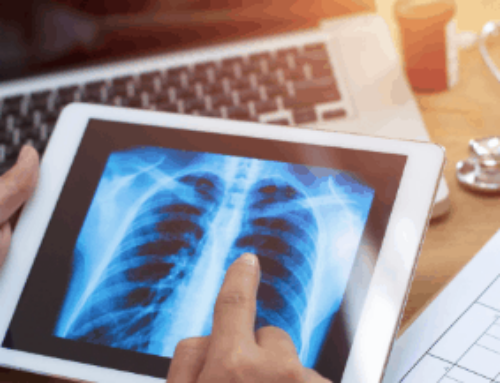- What is breast cancer?
- What are the signs of breast cancer?
- What could cause a breast lump?
- How can I check for breast cancer?
- What happens if I find a lump in my breast?
Except for skin cancer, breast cancer is the most common type of cancer found in women. Steven G. Lester, M.D., board-certified radiation oncologist at Central Florida Cancer Care Center Radiation Oncology Consultants, P.A. knows all too well how a breast cancer diagnosis can change your life. He says that our number one weapon in the early detection of the disease is to regularly screen for it.
Dr. Lester describes the “multi-prong approach for checking for breast cancer,” including the checks that women should undergo regularly both on their own and together with their doctor in this resource.
What is Breast Cancer?
Cancer of the breast is a disease that happens when certain rogue cells begin to multiply and start to spread. Your body holds millions upon millions of cells that grow and die off. Cancer disrupts this natural process by causing old or abnormal cells to grow wildly and begin to crowd out normal cells. In breast cancer, the abnormal, malignant cells typically form a tumor or lump that can be seen by imaging equipment or even felt with your hand.
This year, we estimate 281,550 new cases of malignant breast cancer will be diagnosed. While it’s rare, men can also get breast cancer. On the bright side, thanks to the evolution of early diagnostic tools and treatment, there are over 3.8 million breast cancer survivors in the United States.
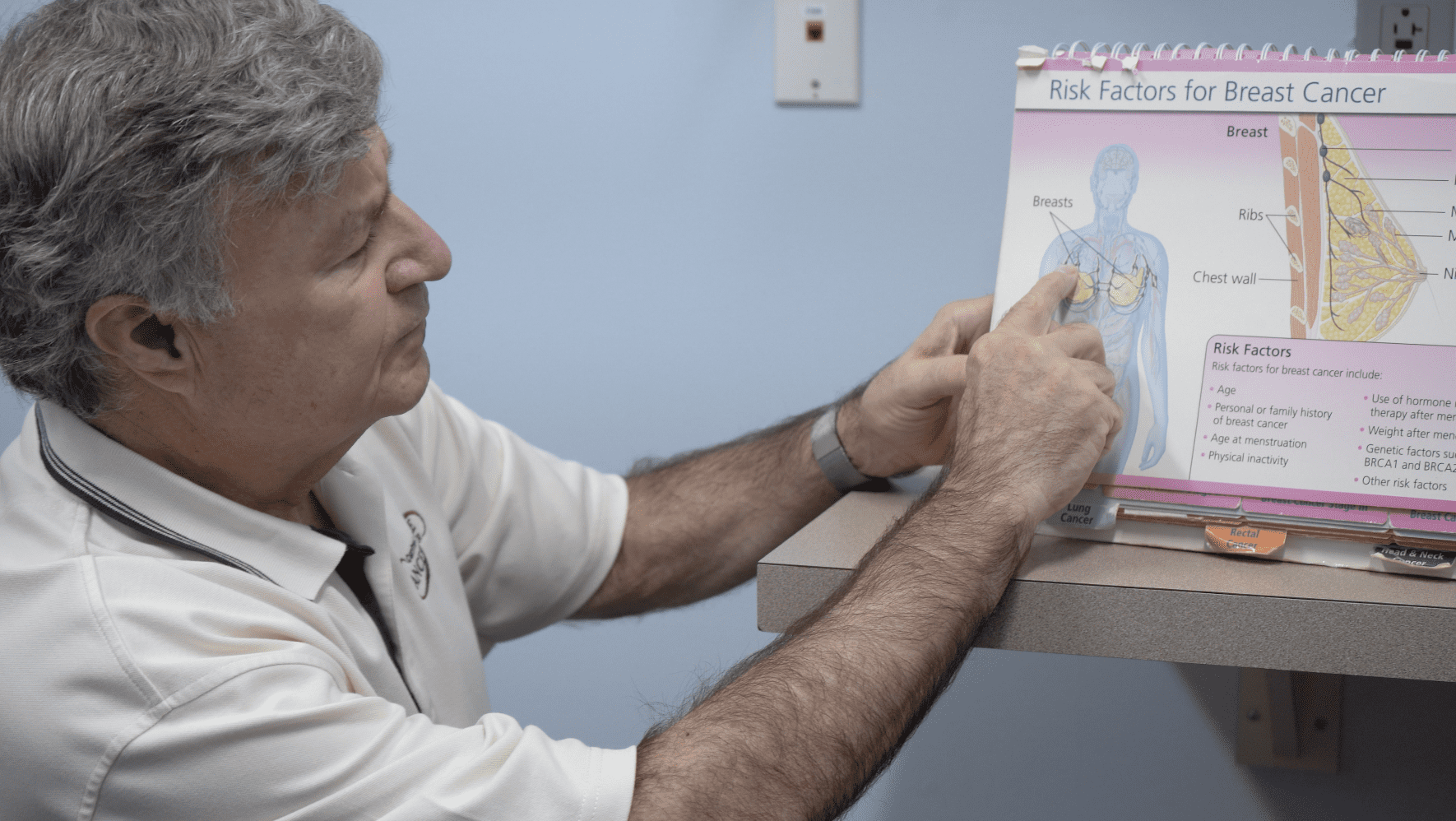 What Are the Signs of Breast Cancer?
What Are the Signs of Breast Cancer?
Dr. Lester says to watch for four primary signs of breast cancer:
- A lump on the breast
- Nipple inversion, where the nipple turns inward
- Nipple discharge (other than breast milk)
- Changes in skin color
You may also find a lump in your breast that may be painful or not hurt at all. The skin may dimple and look like the skin of an orange. You may even notice that your lymph nodes under your arm or around the collarbone are swelling or painful. This could occur even before the lump in your breast is large enough to detect with your hand or visually.
A lump in your breast will feel similar to the knuckle tissue on your hand. The lump will be defined, with edges, “almost measurable, if you squeeze it a little bit,” says Dr. Lester.
If you notice any changes in your breasts, don’t panic, but do call your doctor right away for an examination. Many breast lumps are benign, meaning not cancerous, but to know for sure, you will need to check with a healthcare provider.
What Could Cause a Breast Lump?
There are several causes of lumps in the breasts that may or may not have anything to do with dangerous cancer cells. For example:
- Cysts are fluid-filled sacs that could cause a lump in the breast
- Fibroadenomas are the most common non-malignant breast lump
- Fibrocystic changes to the breast can occur from your hormone cycle
- Intraductal papilloma are small growths similar to warts near the nipple
- Traumatic fat necrosis occurs where there is a traumatic breast injury
Out of all the lumps that doctors biopsied each year, only 20% are breast cancer. That’s good news. However, if you don’t check your breasts for cancer regularly, how will you know if you’ve beaten the odds?
 How Can I Check for Breast Cancer?
How Can I Check for Breast Cancer?
Dr. Lester recommends two primary ways to check for breast cancer: a monthly self-examination and a yearly mammogram.
Examine your breasts at least once a month in the mirror and by hand. Dr. Lester says, “Ladies will know their breasts better than their primary care or gynecologist because [their doctor is] only seeing them once a year.”
When conducting your self-breast exam, there are six steps to follow:
- Stand in front of the mirror to check your breasts to be sure they’re the usual size, shape, and color
- Raise your arms and look again
- While your arms are raised, make sure there is no fluid coming from the nipples
- Lie down, raise one arm above your head, then use your other hand to search for lumps in that breast
- Repeat that process on the other side
- Finally, stand up and feel your breasts, again searching for lumps or painful areas
You should also get a mammogram. According to Dr. Lester, women aged 40 to 44 should have an annual mammogram. He says, “If there’s a strong family history or you’ve been found to have a genetic mutation because another family member had breast cancer, you may be getting mammograms every six months.”
Dr. Lester says, “We’ll add ultrasound if the radiologist feels it’s appropriate.” Women with dense breast tissue may need an ultrasound to be certain of the diagnosis. For women with a high risk for breast cancer, your doctor may also recommend an annual magnetic resonance imaging test (MRI).
What Happens If I Find a Lump in My Breast?
The first step is to call your primary care doctor or gynecologist, who can get you checked out. During this appointment, you will have a health history and the doctor will conduct a manual breast exam.
The doctor may also order breast imaging tests, such as an MRI or ultrasound. If you have not had a mammogram, one will be ordered and there may be additional imaging such as ultrasound or MRI. The diagnosis may also be confirmed with an MRI or even molecular breast imaging (MBI). You may also have a biopsy, which will remove a small sample of the breast tissue. That tiny sample will go to a lab to determine if there are cancer cells present. It’s at that point that you will likely be referred to a breast specialist, oncologist, or breast surgeon.
Checking for breast cancer in the comfort of your home is easy. The more you examine your breasts, the easier it will be to detect any abnormalities that could be problematic. At Central Florida Cancer Care Center Radiation Oncology Consultants, P.A., we help women diagnosed with breast cancer to successfully treat and survive this disease. Talk to our practice at 407-203-2700 to find out more.

